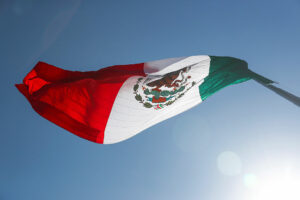AMLC still eyes to exit FATF ‘gray list’ by January

THE ANTI-MONEY Laundering Council (AMLC) is optimistic that the country can exit the Financial Action Task Force’s (FATF) “gray list” by January next year, but it would require the cooperation of government agencies and the private sector.
“The country is doing what is necessary to hopefully exit the gray list by January next year. We recognize, however, that the decision ultimately rests with the assessors from the FATF’s International Co-operation Review Group (ICRG),” the AMLC told BusinessWorld in an e-mail.
“With the assured cooperation of all agencies concerned and the whole-of-nation approach to address the strategic deficiencies noted by the FATF, the AMLC is optimistic that the Philippines can resolve these remaining strategic deficiencies and finally exit the gray list,” it added.
The Paris-based FATF has kept the Philippines on its gray list of jurisdictions under increased monitoring for “dirty money” risks since June 2021.
To be removed from the list, the Philippines has committed to comply with 18 action plan items of the ICRG. Progress reports are submitted to the FATF in three reporting cycles in a year: January, May and September. The Philippines is expected to undergo another mutual evaluation in 2026.
According to the AMLC, the FATF’s statement for October 2023 highlights the areas where the Philippines needs to enhance its anti-money laundering and counter-terrorism financing (AML/CTF) measures.
“While we had adequately prepared and demonstrated progress, we recognize this as an opportunity and understand that this is necessary to maintain the integrity and stability of the country’s financial system,” it said.
The implementation of Executive Order (EO) No. 33 will demonstrate the Philippines’ proactive stance and commitment to work with the FATF against dirty money, the AMLC said.
President Ferdinand R. Marcos, Jr. in July issued EO 33, which adopts the National Anti-Money Laundering, Counter-Terrorism Financing and Counter-Proliferation Financing Strategy 2023-2027 (NACS) to incorporate the ICRG action plan.
The NACS is a “harmonized” method that boosts the country’s mechanisms to support an effective AML/CTF regime, the AMLC said.
In October, Mr. Marcos gave all government agencies until Nov. 30 to address deficiencies in their AML strategies. It also directed the AMLC to submit a comprehensive report of the NACS implementation by Dec. 8.
The AMLC serves as the lead agency of the NACS risk assessment working group, which formulates and issues guidelines for implementation.
“All relevant government agencies, including the supervisors, regulators, law enforcement agencies and prosecutors have been working continuously to accomplish their targets and contribute to the country’s efforts to exit the FATF gray list,” the AMLC said.
The FATF in its October update said the Philippines should continue to demonstrate effective risk-based supervision of designated nonfinancial business and professions (DNFBPs) and ensure that supervisors are using the proper AML/CTF controls to mitigate risks associated with casino junkets.
The Philippines should also enhance and streamline law enforcement agencies’ access to beneficial ownership information and ensure accurate and up-to-date information. It should also increase investigation and prosecution of cases related to money laundering and proliferation financing, the FATF said
The private sector also plays a crucial role in the country’s efforts to exit the gray list, the AMLC said.
“In particular, there is a need to significantly increase registration with the AMLC of lawyers, accountants, company service provider, dealers in precious metals and stones, and real estate brokers and developers,” the AMLC said.
“The AMLC has implemented a strong registration campaign to mandate registration of these DNFBPs. Likewise, to ensure accurate and up to date BO information, corporations should comply with SEC (Securities and Exchange Commission) directives,” it added.
There are 22 other countries in the gray list aside from the Philippines. — Keisha B. Ta-asan




